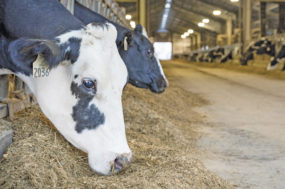Yes, maybe we still picked our nose and ate glue, but there was the sense these first few days – maybe even hours – were going to inform the rest of our lives. Would we become business leaders or McDonald’s employees? Would we have a shot at president or end up living on the streets? It all started with the beaver.
Ms. Crowell, the teacher, said to color the body of the beaver brown. A few days earlier, I was watching a crime show with my parents, and they talked about a dead body. Later, in the barn, I asked my parents what part of the person did they mean by the term “dead body.” They said it meant the whole person. Because of that, I thought that when it came to the brown crayon, the whole beaver was in play. After filling in the abdomen, I started in on the tail. Just like that, my run for president was over.
Ms. Crowell leaned over me. “Ryan, I said you should color the body of the beaver brown. You need to follow directions.”
Ms. Crowell went to the front of the room and announced that the class can now start coloring the tail of the beaver yellow.
I dug that half-chewed yellow crayon into the paper as hard as I could, but nothing I did would make that brown streak in the tail disappear. Other students crowded around Ms. Crowell when they were done and proudly held up their perfect bi-color beavers, but not me. I moped in the self-pity of a failed artist.
Some people say making art is easy and anyone could do it. Usually, these aren’t the type of people I become friends with. Still, I was a bit shocked to hear of a hog in South Africa making a splash in the art world. Her name? Wait for it … yes … it’s Pigcasso. Her owner, Joan Lefson, gave the sow several toys to play with, including a paintbrush. After Pigcasso picked up the brush and was given paints and a canvas to work with, she soon started creating colorful avant-garde pieces.
It has to be noted the style is rather abstract and might require an art degree to unpack its layered meanings. To protect her work against imitators, she authenticates the paintings by stamping her snout on them. And what do these paintings sell for? Wait for it … yes … the equivalent of about $3,000 U.S. dollars.
In the ’50s, several researchers wanted to explore the nature of humans’ innate relationship to art and to do so catalogued hundreds of paintings by primates. They found that many of the monkey painters developed more sophisticated art over time, leading researchers to believe humans, therefore, have abstract creativity as part of their evolutionary makeup. In the 1960s, it was even popular to include monkey paintings in modern museums of art.
One chimpanzee, Congo, created more than 400 paintings in the style of “lyrical abstract impressionism.” A zoologist who happened to be a surrealist painter himself noticed the ability in Congo and documented their painting sessions. Congo was able to achieve color and symmetry balance in his work, and he would reportedly throw a fit if the painting was taken from him before he considered it done. Pablo Picasso (the real Spanish painter, not the pig) was supposedly a fan of Congo and owned one of his pieces.
Even the cows have broken into the art scene lately. Baker City, Oregon, hosts the Great Salt Lick Contest every September, where local farmers enter their half-consumed salt licks that cattle have turned into abstract pieces. Art enthusiasts both urban and rural gather to bid on the pieces at the auction that follows the contest, the proceeds going to support research into Parkinson’s disease. The auction typically raises between $10,000 and $15,000 every year. Some farmers around Baker City even suggest they now breed for artistic craftsmanship.
Apparently elephants, dolphins and rabbits have recently been trained to paint. That means that not only am I probably the sole person in the world without an artistic bone but perhaps the only example in the animal kingdom as well. I resented having to stay in at recess to practice coloring inside the lines while the other kids got to play. Frankly, I’ve seen what the pig has painted, and I think she’s getting away with a lot. I haven’t stepped into a kindergarten classroom since 1990, but I hope we’ve advanced far enough as a species in three decades to recognize that if a kid wants to paint a beaver’s tail brown – nay, if he interprets that it should be brown, we let him at it. If not, let’s just leave art to the animals. ![]()
Ryan Dennis is the son of a former dairy farmer from western New York and a literary writer.





